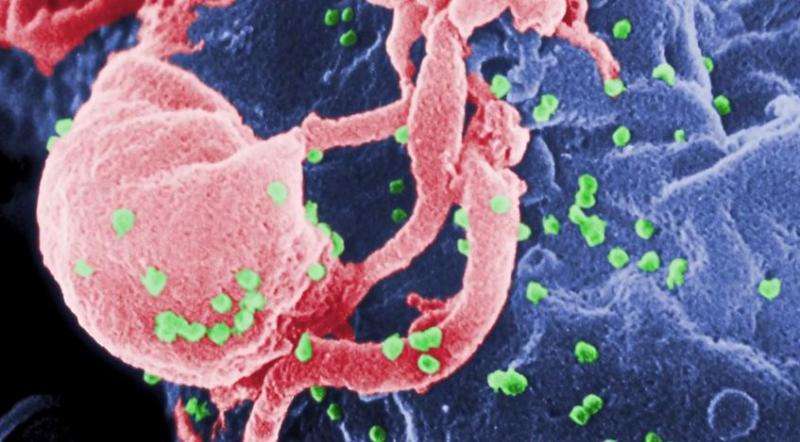Editing HIV out of our genome with CRISPR

The virus that causes AIDS is an efficient and crafty retrovirus. Once HIV inserts its DNA into the genome of its host cells, it has a long incubation period, and can remain dormant and hidden for years. And while physicians can mix and match a cocktail from a host of antiretroviral drugs to keep the virus in check, the virus can reactivate if treatment is stopped.
In an attempt to render latent HIV completely harmless, researchers at the University of Massachusetts Medical School are using Cas9/CRISPR, a powerful gene editing tool, to develop a novel technology that can potentially cut the DNA of the latent virus out of an infected cell.
"On the simplest level we're employing a very precise pair of scissors to go in and clip out all, or part of, the HIV genome and reattached the severed ends of the human genome," said principal co-investigator Scot Wolfe, PhD, associate professor of molecular, cell and cancer biology at UMass Medical School. "If we could do that, the hope is that this would be a step on the road to getting a functional cure for HIV."
A component of the immune system found in normal bacteria, in its natural state CRISPR protects bacteria from viral invasion. Since its discovery, researchers have been furiously finding ways to program this system to quickly and selectively edit specific genetic sequences for study.
For all its versatility, applications for the CRISPR system remain confined to the lab. Despite recent advances showing that Cas9/CRISPR can edit HIV from an infected cell in culture, this technique remains too imprecise to be used clinically because of its tendency to cut into random regions of the genome, producing deleterious, off-target effects.
To improve the fidelity and precision of the Cas9/CRISPR gene editing system for this project, Wolfe has proposed fusing it with an additional domain that improves its specificity. This would conceivably allow the CRISPR system to edit out only the HIV DNA without the potential for stray cuts in the human genome.
The other hurdle to using current Cas9/CRISPR technology against HIV is that while researchers have some notions where the virus might be hiding, they still don't know how to find the virus in latently infected cells.
"Cells that are infected with HIV are permanent carriers of the viral genome. They are a kind of time bomb that can reactive at any time if a patient stops taking their antiretroviral treatment," said principal co-investigator Jeremy Luban, MD, the David J. Freelander Professor in AIDS Research and professor of molecular medicine at UMass Medical School. "In order to attack the virus in its latent state, we really need to understand where the virus lives and what it needs to survive."
Drs. Luban and Wolfe will use a combination of innovative technologies to describe and model HIV DNA integrated into the genome of reservoir cells, also known as provirus. Characterizing the genomic landscape of these latently infected cells will allow the researchers to identify vulnerable and accessible genetic sequences that can be potentially cut out of the HIV virus to make it permanently inactive.
"Many scientists are looking for tools that will activate the virus so it will be visible to the immune system or drugs. We've chosen a different approach that looks to isolate and excise the provirus directly from resting cells," said Luban.
With a model of the latently infected cells' genome from which to work, the hope is that Wolfe can use his precise gene editing tool to excise the latent virus from cells. Part of the project will be to assess whether the precision of the system has improved enough to allow for selected removal of the HIV genome in humanized mouse models and cells from infected patients without causing collateral damage to the human genome.
"The underlying premise of this project that Scot has pushed forward using new technologies that he has developed, is to genetically engineer a system that can potentially remove the HIV genome from infected cells," said Luban. "The hope is that one might develop the tools to deliver these agents to cells of the human immune system and actually eliminate the virus from where it is hiding."
"We've assembled a team of researchers here at UMass Medical School with the goal of better understanding the intricate structure of the latent HIV virus when integrated into immune cells because we believe that will allow us to better target it with CRISPR for gene editing," Wolfe explained.





















